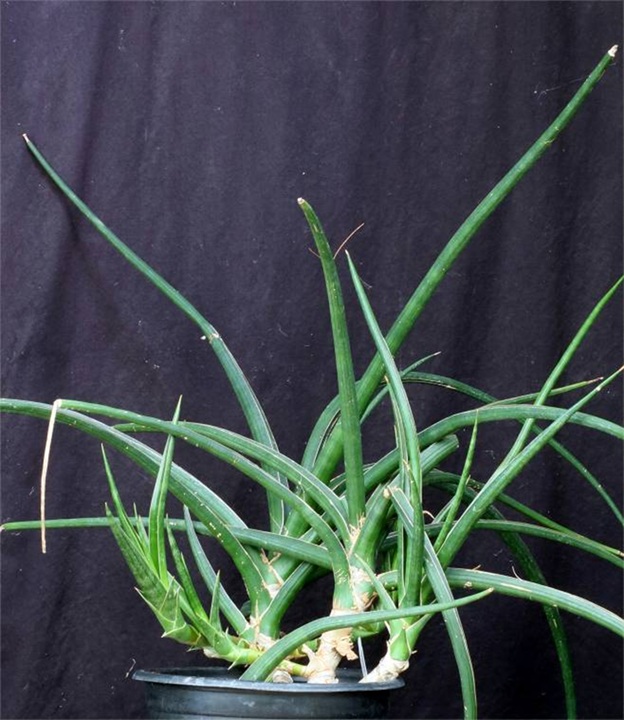| |
Sansevieria caulescens N.E. Brown |
| Protologue: |
Bulletin of Miscellaneous Information, Kew 5: 200 (1915). |
| Subgenus: |
Sansevieria |
| Group: |
not considered a viable species |
| Etymology: |
The epithet means “stem-forming”, which isn’t a particularly useful description within the genus Sansevieria as there are several species with multiple stems. |
| Distribution: |
This species is supposedly from eastern Kenya, but it was described without specifying a type locality. |
| Brief Description: |
This is a short, caulescent with more-or-less erect stems that branch near the base and spread. The stem can be about 60 cm long and 2.5-5 cm in diameter, and the cylindrical leaves are numerous, spreading, slightly recurved, and densely spiralled. There is a groove along the upper face almost to the tip. The leaves are 80-100 cm long by 1.9-3.6 cm in diameter, stout, and dark green, and the lower face bears 9 - 12 dark longitudinal striations. The slightly rough leaves have vague transverse dark green bands and taper to a somewhat pungent tip. The inflorescence is 60-75 cm tall and simple with 6 - 12 flowers per cluster. |
| Similar Species: |
No specimens have been collected from habitat since the type was originally collected. This “species” has affinities to other species larger and smaller, and overall it is suggestive of a natural hybrid. Whether this is true, and what the putative parents are, remains an open question that requires additional research. Clearly this could be part of the Sansevieria suffructicosa complex, and some have suggested that it belongs in S. gracilis, but that species is much smaller with smooth, light green leaves. The leaves are much larger than Sansevieria patens, another putative hybrid, but that species lacks the stems of S. caulescens. We can only speculate that the plants distributed in cultivation originated in Europe, possibly as offsets or cuttings from the plants Brown (1915) described at Kew Gardens that are now dead. |
| |
| |

Sansevieria caulescens in cultivation, showing the multiple stems and offsets from stolons.
|
|
| |
| |
|
|
| |
| |
|
|

